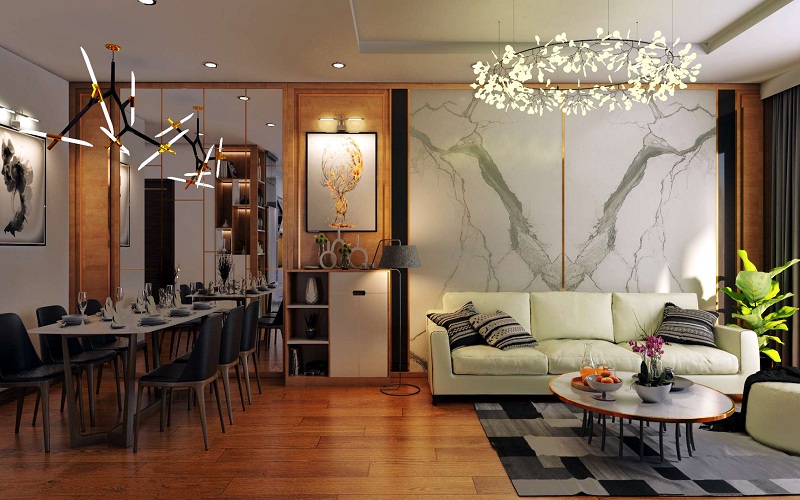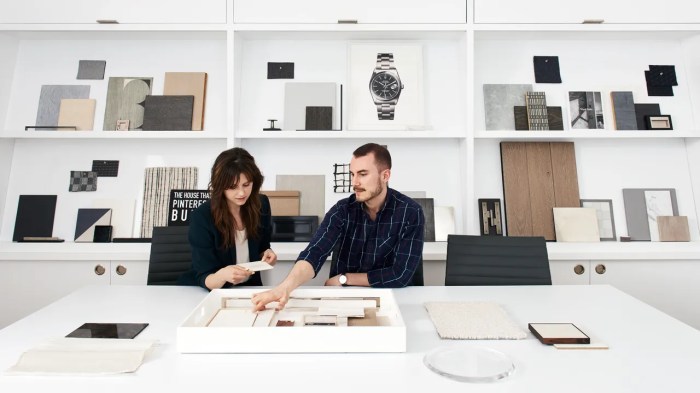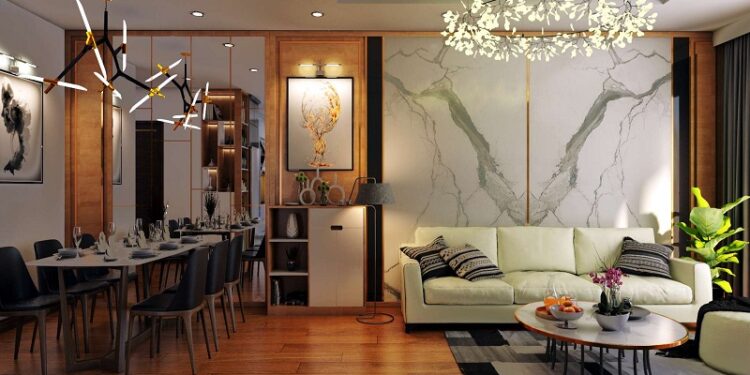
Stepping into the realm of architecture and interior design, one is greeted with a world where creativity meets functionality. This field demands a blend of artistic vision and technical expertise, shaping spaces that not only please the eye but also serve a purpose.
Let's delve into the fascinating domain of architects and interior designers.
Overview of Architects and Interior Designers

Architects and interior designers play crucial roles in the design and construction industry, but their responsibilities and focus areas differ significantly.
Roles and Responsibilities
Architects are responsible for designing and planning the overall structure of buildings, ensuring they are functional, safe, and aesthetically pleasing. They work closely with clients, engineers, and construction teams to bring their designs to life. On the other hand, interior designers focus on creating functional and visually appealing interior spaces.
They work with clients to understand their needs and preferences, selecting furniture, colors, and decorations to enhance the look and feel of a space.
Educational Requirements
Becoming an architect typically requires a professional degree in architecture, which is usually a Bachelor's or Master's degree from an accredited program. Additionally, architects must complete a period of practical training and pass a licensing exam to practice independently. On the other hand, interior designers may pursue a Bachelor's degree in interior design or a related field, followed by gaining experience through internships or apprenticeships.
While licensing requirements for interior designers vary by state, many choose to become certified through organizations like the National Council for Interior Design Qualification (NCIDQ).
Scope of Work
Architects focus on the overall design and structure of buildings, including exterior facades, structural systems, and building codes compliance. They are involved in the entire construction process from initial concept to project completion. Interior designers, on the other hand, concentrate on creating functional and aesthetically pleasing interior spaces, including selecting finishes, furniture, lighting, and accessories.
They work closely with architects to ensure the interior design aligns with the overall architectural vision.
Skills Required for Success
To thrive in the fields of architecture and interior design, professionals need a unique set of skills that go beyond technical knowledge. Creative thinking, problem-solving abilities, and attention to detail are just a few of the key traits necessary for success.
Key Skills for Architects
Architects must possess a combination of technical expertise and creative vision to excel in their profession. Some essential skills for architects include:
- Design proficiency: Architects should have a keen eye for aesthetics and the ability to create visually appealing and functional spaces.
- Technical knowledge: Understanding building codes, structural systems, and construction materials is crucial for designing safe and efficient structures.
- Communication skills: Architects must effectively communicate their ideas to clients, contractors, and other team members to ensure the successful execution of a project.
- Problem-solving abilities: Being able to think critically and find innovative solutions to design challenges is essential for architects.
- Time management: Juggling multiple projects and deadlines requires strong organizational skills and the ability to prioritize tasks effectively.
Creative Skills for Interior Designers
Interior designers rely on their creativity and artistic flair to transform interior spaces into inviting and functional environments. Some creative skills needed for interior designers include:
- Space planning: Understanding how to optimize the layout of a room and make the best use of available space is crucial for interior designers.
- Color theory: Knowing how to use color harmoniously and create the desired atmosphere in a space is a key skill for interior designers.
- Material selection: Choosing the right materials, fabrics, and finishes to enhance the overall design concept is essential for interior designers.
- Attention to detail: Interior designers must pay close attention to every element of a design, from furniture placement to lighting fixtures, to ensure a cohesive and polished look.
- Client collaboration: Working closely with clients to understand their needs and preferences is essential for creating personalized and unique design solutions.
Importance of Technical Knowledge
Both architects and interior designers rely on technical knowledge to bring their creative visions to life. Understanding building codes, construction techniques, and industry standards is essential for ensuring the safety and functionality of design projects. Technical expertise also allows professionals to collaborate effectively with engineers, contractors, and other specialists involved in the design and construction process.
Design Process and Workflow

.com/wp-content/uploads/2025/08/027baf938d29ffdce93f8b2ea55e45cf.jpg" alt="Interior Architecture: Transforming Spaces into Masterpieces of ..." width="700" height="400" />
The design process and workflow followed by architects and interior designers play a crucial role in the successful completion of projects. Let's dive into the typical steps involved in each profession and compare their design approaches.
Architects’ Design Process
Architects follow a structured design process that typically includes the following steps:
- Programming: Understanding the client's needs, project requirements, and constraints.
- Schematic Design: Developing initial design concepts and sketches based on the project parameters.
- Design Development: Refining the chosen concept, incorporating technical details, and preparing construction documents.
- Construction Documentation: Creating detailed drawings, specifications, and other documents required for construction.
- Bidding and Negotiation: Assisting the client in selecting a contractor and negotiating the construction contract.
- Construction Administration: Overseeing the construction process to ensure the design intent is carried out.
- Post-Occupancy Evaluation: Assessing the completed project's performance and addressing any issues that arise.
Interior Designers’ Workflow
Interior designers also follow a systematic workflow to bring their design concepts to life, including:
- Initial Consultation: Meeting with the client to understand their preferences, budget, and requirements.
- Concept Development: Creating mood boards, sketches, and layouts to present design ideas to the client.
- Design Refinement: Incorporating feedback from the client and making revisions to the initial concepts.
- Material Selection: Choosing furniture, finishes, lighting, and other elements to complement the design.
- Documentation: Creating detailed drawings, schedules, and specifications for the project.
- Project Management: Coordinating with contractors, vendors, and other professionals to execute the design plan.
- Installation and Styling: Overseeing the installation of furnishings and accessories to complete the project.
Comparison of Design Approaches
While architects focus on the overall structure and functionality of a space, interior designers pay attention to the aesthetics and ambiance. Architects often work on larger-scale projects, while interior designers specialize in creating cohesive and visually appealing interiors. Both professions require creativity, technical skills, and a deep understanding of design principles to deliver successful projects.
Collaboration and Teamwork
Collaboration and teamwork are essential aspects of the successful execution of architectural and interior design projects. Architects and interior designers often work closely together to create cohesive and functional spaces that meet the needs of their clients.
Architects and Interior Designers Collaboration
Architects and interior designers collaborate throughout the entire design process, from the initial concept development to the final implementation of the project. Architects focus on the structural and exterior elements of the building, while interior designers are responsible for the interior layout, finishes, and furnishings.
By working together, they ensure that the overall design is harmonious and functional.
Importance of Teamwork in Construction Industry
Teamwork is crucial in the construction industry as it involves coordination between various professionals such as architects, interior designers, engineers, contractors, and craftsmen. Each team member brings their expertise to the table, ensuring that the project is completed efficiently and meets the client's requirements.
Effective communication and collaboration among team members lead to successful project outcomes.
Examples of Successful Collaborations
One notable example of successful collaboration between architects and interior designers is the Guggenheim Museum in Bilbao, Spain. Architect Frank Gehry worked closely with interior designer Juan Ignacio Diaz to create a seamless integration of the building's iconic architecture with the interior spaces, resulting in a stunning and cohesive design.
Another example is the collaboration between Zaha Hadid Architects and Karim Rashid for the "Lacoste and Campana" store in New York City, where their combined creativity and expertise produced a visually striking retail space.
Trends and Innovations
The architecture and interior design industries are constantly evolving, driven by new trends and innovative technologies. Let's explore some of the current trends and innovations shaping these fields.
Current Trends in Architecture
- Integration of nature: Architects are incorporating more green spaces, natural light, and sustainable materials into their designs to create environmentally-friendly and aesthetically pleasing buildings.
- Adaptive reuse: There is a growing focus on revitalizing existing structures rather than tearing them down, leading to more sustainable and unique architectural solutions.
- Smart technology: The integration of smart technology in buildings, such as automated systems for lighting, heating, and security, is becoming increasingly popular for enhancing efficiency and convenience.
Innovative Technologies in Interior Design
- Virtual reality: Interior designers are utilizing virtual reality tools to create immersive 3D visualizations of spaces, allowing clients to experience and interact with designs before implementation.
- Artificial intelligence: AI-powered software is streamlining the design process by analyzing data and predicting trends, enabling designers to make more informed decisions and optimize space planning.
- 3D printing: The use of 3D printing technology in interior design allows for the customization of furniture and decor pieces, offering unique and personalized solutions for clients.
Sustainability Practices Impacting Designs
- Green building certifications: Architects and interior designers are increasingly focusing on obtaining certifications like LEED or WELL to ensure their projects meet high standards of sustainability and wellness.
- Biophilic design: The integration of biophilic design principles, which emphasize the connection between humans and nature, is influencing the use of natural elements, patterns, and colors in architectural and interior design.
- Energy-efficient solutions: Designers are implementing energy-saving technologies and strategies, such as solar panels and passive heating/cooling systems, to reduce the environmental impact of buildings and create more efficient spaces.
Closure
In conclusion, the collaboration between architects and interior designers creates harmonious spaces that elevate the human experience. From conceptualization to realization, their work leaves a lasting impact on the way we interact with our surroundings. Dive into this dynamic field and witness the magic of architecture and interior design unfold before your eyes.
FAQ Corner
What are the main differences between architects and interior designers?
Architects focus on the overall design and structure of a building, while interior designers specialize in creating functional and aesthetically pleasing interior spaces.
What key skills are essential for architects?
Architects need strong design skills, technical knowledge, attention to detail, and the ability to collaborate effectively.
How do architects and interior designers collaborate on projects?
Architects and interior designers work together to ensure that the exterior and interior of a building complement each other seamlessly, creating a cohesive design.
What current trends are shaping the architecture industry?
Some current trends include sustainable design practices, smart technology integration, and a focus on flexible and adaptable spaces.
 Stepping into the realm of architecture and interior design, one is greeted with a world where creativity meets functionality. This field demands a blend of artistic vision and technical expertise, shaping spaces that not only please the eye but also serve a purpose.
Let's delve into the fascinating domain of architects and interior designers.
Stepping into the realm of architecture and interior design, one is greeted with a world where creativity meets functionality. This field demands a blend of artistic vision and technical expertise, shaping spaces that not only please the eye but also serve a purpose.
Let's delve into the fascinating domain of architects and interior designers.
 Architects and interior designers play crucial roles in the design and construction industry, but their responsibilities and focus areas differ significantly.
Architects and interior designers play crucial roles in the design and construction industry, but their responsibilities and focus areas differ significantly.



